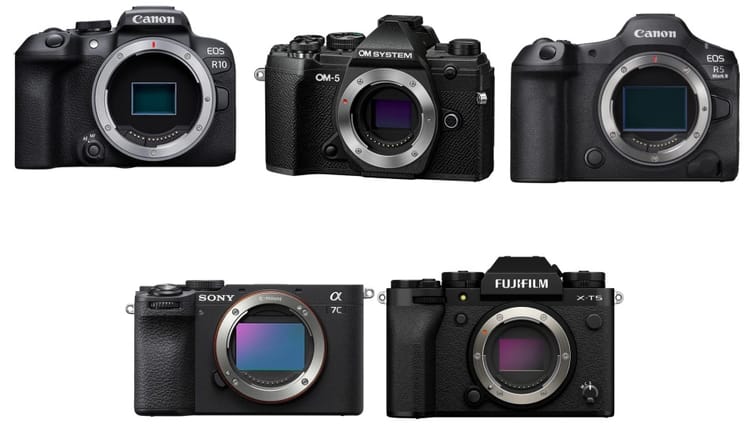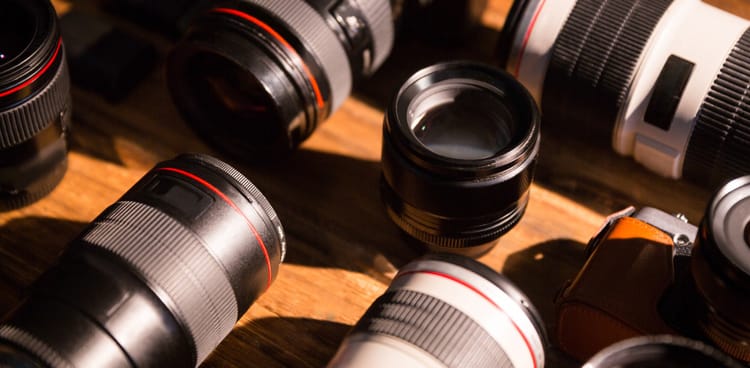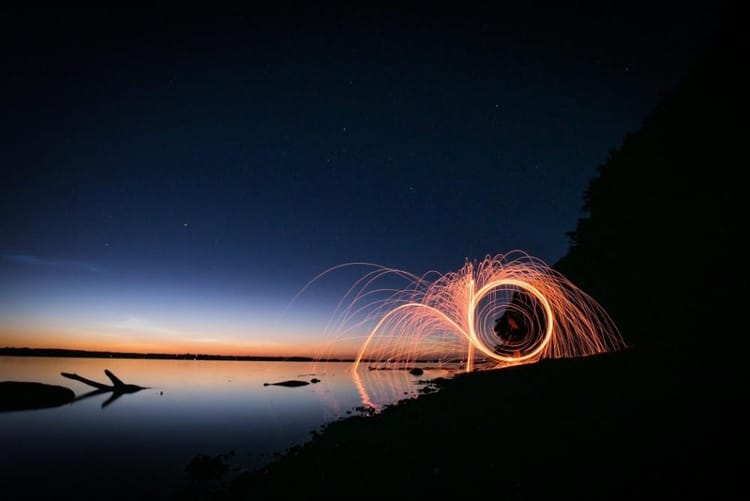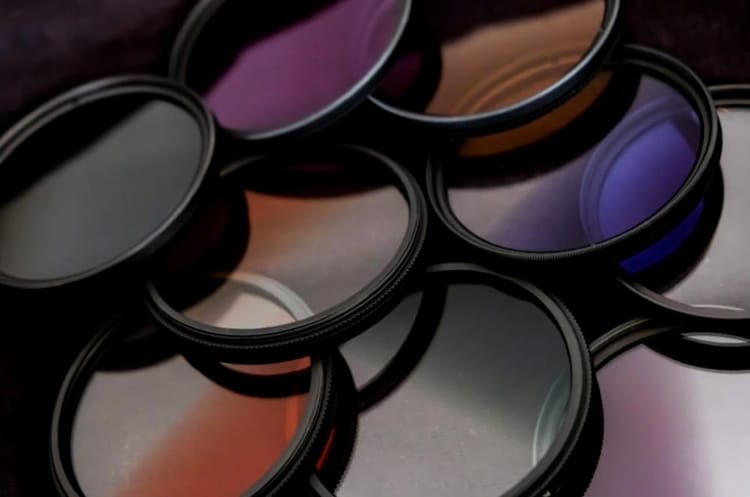How to Choose the Best Macro Photography Lens: A Comprehensive Guide
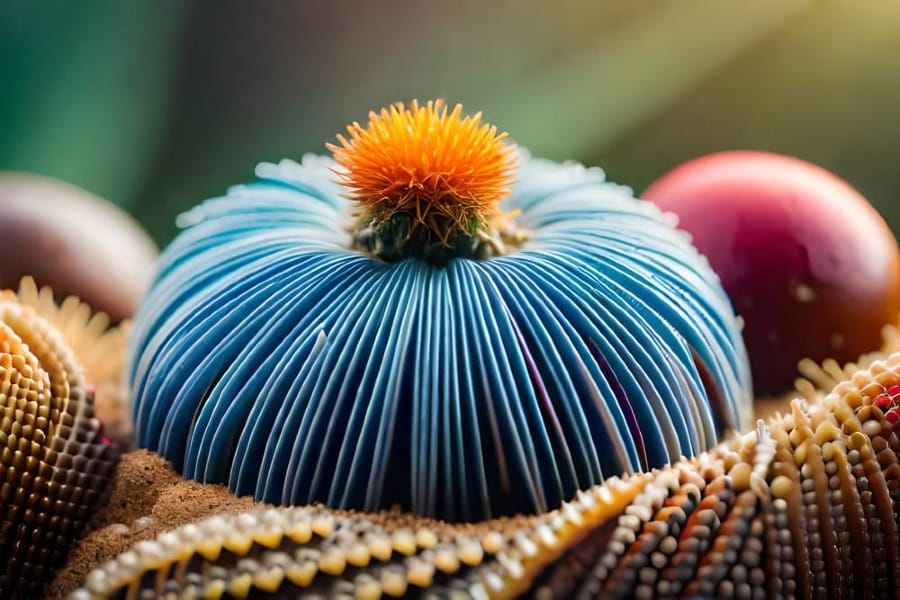
Introduction
Macro photography opens up a fascinating world of minute details and intricate textures that are often overlooked in everyday life. From the delicate patterns on a butterfly’s wings to the tiny water droplets clinging to a blade of grass, macro photography brings these captivating details into sharp focus. However, achieving these kinds of close-up shots requires specialized equipment – specifically, a good macro photography lens. While some may think any camera lens can be used for close-up shots, a macro photography lens is uniquely designed to capture extreme detail with exceptional sharpness, magnification, and color accuracy.
Choosing the right macro photography lens can be a daunting task, especially with the variety of focal lengths, magnification ratios, and price ranges available. Every macro lens has its strengths and is best suited for different types of subjects, so it’s essential to understand which features will best meet your needs. Are you primarily photographing flowers, insects, or textures? Do you need a versatile lens that works well in various lighting conditions, or are you focused on precision and sharpness at very close distances? This guide will help you navigate these questions, covering essential factors like magnification, focal length, and compatibility with different camera systems.
By the end of this comprehensive guide, you’ll be well-equipped to choose a macro photography lens that not only aligns with your creative vision but also empowers you to explore the enchanting world of macro photography with confidence.
Affiliate Disclaimer
This blog post may include links to affiliate sites. If you click on an affiliate link and make a purchase, we may earn a small commission or receive other compensation at no extra cost to you. Please note that many of the links on our site are affiliate links. Our use of these links does not impact the products, services, or websites we recommend to you. This disclaimer covers all forms of communication with you, including our website, email, phone, social media, products, and other platforms.
Section 1: Understanding Macro Photography and the Role of a Macro Photography Lens
To truly appreciate the impact of a macro photography lens, it's essential to first understand the art of macro photography itself and why these specialized lenses are vital. Macro photography isn’t just about taking close-up photos; it’s about capturing intricate details at a scale that reveals new perspectives. Whether you’re photographing tiny insects, delicate flower petals, or intricate textures, the right lens can make all the difference in bringing out the finest details with clarity and depth.
What is Macro Photography?
Macro photography is a genre that focuses on extreme close-ups, typically of small subjects. In technical terms, a true macro photograph is one in which the subject is captured at a 1:1 magnification ratio, meaning the subject’s size on the camera sensor is identical to its real-life size. For example, if you’re photographing a small flower with a 1:1 macro lens, the image projected onto the sensor will match the flower’s actual dimensions, allowing you to capture its texture and details in incredible clarity.
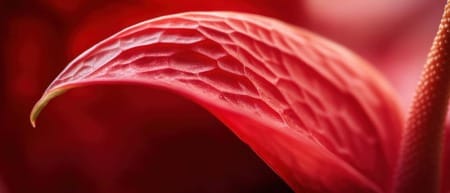
The magnification ratio is what sets macro photography apart from standard photography. Regular lenses, even at their closest focusing distances, are often limited in their ability to capture minute details, especially when attempting to fill the frame with very small subjects. A macro photography lens, however, is designed specifically to achieve high magnification at close range, providing a level of detail that a standard lens simply cannot.
Why You Need a Macro Photography Lens
Using a macro photography lens is essential if you want to explore this genre fully. While you can attempt close-ups with non-macro lenses or rely on cropping in post-production, these methods often compromise image quality and clarity. A dedicated macro photography lens allows you to capture fine textures and small details with precise sharpness and color accuracy, which is crucial for creating stunning macro shots.
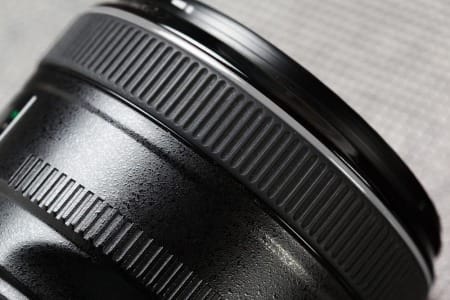
Macro lenses are specially engineered with specific optical designs that minimize distortions and chromatic aberrations, both of which can be more pronounced when photographing at close distances. The result is a lens that excels at close focusing while maintaining excellent resolution and contrast. Macro lenses often also have a flatter field of focus, which means the edges of the image are as sharp as the center, an important quality when capturing small subjects with intricate details.
The Limitations of Standard Lenses in Macro Photography
Using a standard lens for macro-style photography has significant limitations. While you might achieve some level of close-up effect with certain zoom or prime lenses, they lack the high magnification ratios and close focusing capabilities that a macro lens provides. Standard lenses may struggle to achieve the desired level of detail, and at close distances, they can introduce unwanted distortions or vignetting that can detract from the final image. Additionally, non-macro lenses often lack the necessary working distance, meaning you have to position the lens extremely close to the subject, which can be challenging, especially for living subjects like insects.
In contrast, a macro photography lens allows you to work at an appropriate distance, offering what’s known as "working distance." This means you don’t have to be so close to your subject that you risk startling it (in the case of insects) or casting unwanted shadows. With a macro lens, you can capture the same level of detail from a more practical distance, providing more flexibility in your compositions.
Key Features of a Macro Photography Lens
· High Magnification Ratio: A true macro lens offers a 1:1 magnification ratio or greater, essential for capturing subjects at life-size or even larger. This is what enables photographers to capture the smallest details with stunning clarity.
· Close Minimum Focusing Distance: Macro lenses are designed with close focusing capabilities, allowing you to focus on subjects just inches away from the lens. This feature is crucial for creating high-detail images without needing to crop or adjust in post-processing.
· Flat Field of Focus: Most macro lenses are designed with a flatter field of focus, ensuring that details across the frame remain sharp and free from distortion. This feature is particularly important when photographing flat or highly detailed subjects.
· Optimized Optics for Close-Up Photography: Macro lenses are equipped with specialized optical designs to reduce chromatic aberrations, ghosting, and other optical issues that can be more pronounced at close distances. The result is consistently clear, sharp images across the frame.
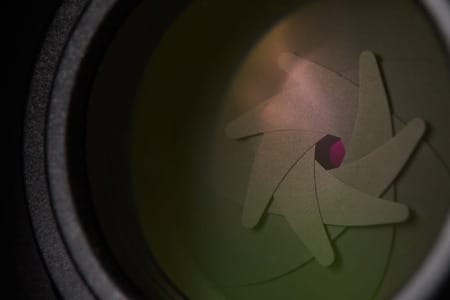
By understanding these characteristics and the fundamental differences between a macro photography lens and a standard lens, photographers can make informed choices that enhance their creative potential. With the right lens, macro photography opens doors to an enchanting miniature world, revealing the beauty in details that might otherwise go unnoticed.
Section 2: Key Features to Look for in a Macro Photography Lens
Selecting the right macro photography lens involves understanding the key features that make it effective for capturing close-up details. From magnification ratios to focal lengths, each feature impacts how well the lens can meet the unique challenges of macro photography. Here, we’ll break down the essential attributes of a macro lens so you can make an informed choice based on your needs and shooting style.
Magnification Ratio
One of the defining features of a macro photography lens is its magnification ratio. Typically, a true macro lens offers a 1:1 magnification ratio, meaning the subject is projected onto the sensor at life-size. For example, if you photograph a 1 cm insect, it will appear as 1 cm on your camera’s sensor, allowing for detailed close-ups that reveal the intricate details of your subject.
Some macro lenses go beyond 1:1, offering greater magnification ratios, such as 2:1 or even 5:1. These lenses are ideal for extreme close-ups, though they may require specialized techniques and setups, especially for capturing sharp images at such high magnifications. When choosing a macro photography lens, think about the level of detail you want to capture and whether a standard 1:1 ratio will suit your needs or if you might benefit from higher magnification capabilities.
Focal Length Options
Macro lenses come in various focal lengths, each offering distinct advantages depending on your subject matter. Common focal lengths for macro lenses include 50mm, 90mm, 100mm, and 180mm. Here’s how different focal lengths affect your macro photography:
· Short Focal Lengths (50-60mm): These lenses are typically more affordable and lighter. They’re great for capturing stationary subjects, such as flowers and small objects, but require you to be very close to the subject. This can be limiting for shy or mobile subjects like insects, as the proximity might disturb them.
· Medium Focal Lengths (90-105mm): Often considered the "sweet spot" for macro photography, these lenses provide a comfortable working distance while still being relatively compact. They’re versatile enough for a wide range of subjects, from insects to still-life objects, and work well in various lighting conditions.
· Long Focal Lengths (150-200mm): Longer focal lengths offer the benefit of greater working distance, making them ideal for photographing subjects that may be sensitive to close contact, like butterflies or other small animals. These lenses tend to be bulkier and more expensive, but they provide more flexibility in capturing distant details without casting shadows or scaring off the subject.
Minimum Focusing Distance
The minimum focusing distance is the closest distance from which a macro photography lens can focus on a subject. This feature is crucial in macro photography, as it determines how close you can get to your subject while maintaining sharp focus. A shorter minimum focusing distance allows for more detailed shots, particularly when working with stationary subjects. For photographers interested in insects or wildlife, a longer minimum focusing distance (achieved with longer focal lengths) offers a practical advantage, enabling you to capture detail without getting too close and potentially disturbing the subject.
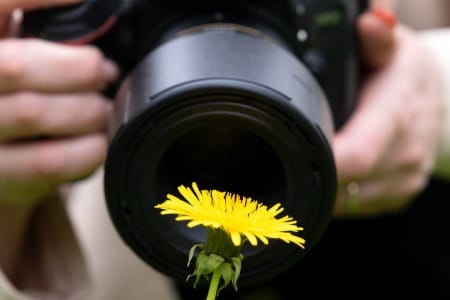
Aperture and Depth of Field Control
In macro photography, depth of field (DoF) becomes incredibly shallow at close distances. Choosing a macro photography lens with a wide maximum aperture, such as f/2.8, can help with low-light situations, although the very narrow depth of field at close range can make it challenging to keep the entire subject in focus. Stopping down the aperture (using a smaller aperture like f/8 or f/11) can increase the depth of field, helping to keep more of the subject in sharp focus. A balance between aperture and distance is crucial to achieve the right amount of sharpness and background separation for your macro shots.
Image Stabilization (IS/VR)
Some macro lenses come with built-in image stabilization, which can be beneficial, especially if you’re shooting handheld. Image stabilization helps reduce the impact of camera shake, which is often more noticeable in macro photography due to the high magnification and close focusing. While image stabilization doesn’t replace a tripod, it’s useful in situations where using a tripod isn’t feasible, such as when photographing moving subjects outdoors.
Autofocus vs. Manual Focus
Autofocus can be challenging in macro photography, especially at close distances where even slight shifts in focus are noticeable. Some macro photography lenses are optimized for precise manual focus, allowing photographers to achieve exact sharpness where they want it. Many macro photographers prefer using manual focus in conjunction with focus peaking (available on some cameras) to ensure the subject is captured accurately. However, if you need a quick and responsive autofocus system for fast-moving subjects, look for a macro lens that’s known for reliable AF performance.
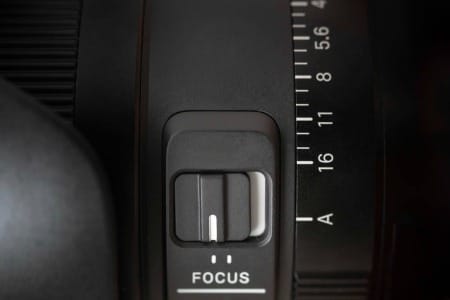
Summary
When choosing a macro photography lens, consider these key features carefully, as each plays a significant role in how the lens will perform in close-up scenarios. The right combination of magnification, focal length, focusing capabilities, and other features will help you capture sharp, detailed images in various settings, allowing you to get closer to the hidden beauty of the macro world.
Section 3: Types of Macro Photography Lenses
Choosing the right macro photography lens involves more than just magnification and focal length. There are several types of macro lenses designed to meet different creative needs, each offering unique features and capabilities. Understanding the distinctions between these types will help you select a lens that best complements your subject matter and shooting style, whether you’re an enthusiast capturing flowers or a professional seeking extreme close-ups of insects.
Prime Macro Lenses
Prime lenses are among the most popular choices for macro photography and for a good reason. A macro photography lens with a prime focal length provides exceptional sharpness, reliable performance, and simplicity of use. Because these lenses have a fixed focal length (e.g., 50mm, 90mm, 105mm), they are generally lighter, more compact, and better optimized for image quality compared to zoom lenses.
Prime macro lenses typically offer a true 1:1 magnification ratio, allowing photographers to capture subjects at life-size on the camera sensor. This feature makes them ideal for detailed images, where sharpness and clarity are crucial. Prime macro lenses are available across a range of focal lengths, each suited for different types of macro photography:
· Shorter Focal Length Primes (50mm - 65mm): These are compact and ideal for stationary subjects, such as flowers or small objects in controlled environments. However, shorter primes require photographers to be very close to their subjects, which may not be ideal for photographing insects or other living subjects that are easily disturbed.
· Mid-Range Focal Length Primes (90mm - 105mm): Often considered the “standard” for macro photography, these lenses offer a balance between working distance and portability, making them versatile for a range of subjects. They allow for a comfortable working distance, providing flexibility whether you’re shooting small objects or small animals.
· Long Focal Length Primes (150mm - 200mm): These lenses provide an extended working distance, which is particularly useful for shy or moving subjects, such as insects or small animals. While heavier and generally more expensive, long primes are ideal for field work where minimal disturbance to the subject is crucial.
Zoom Lenses with Macro Capabilities
Some zoom lenses feature “macro” capabilities, providing an alternative to true macro lenses. These lenses allow for a closer focusing distance than standard zooms and can often achieve a 1:2 magnification ratio, which is half life-size. While they don’t offer true 1:1 macro magnification, they are still useful for photographers who want the versatility of a zoom lens with some close-up capability.
A zoom lens with macro functionality can be beneficial for casual or versatile use, as it allows photographers to switch from wide-angle to close-up perspectives without changing lenses. However, it’s essential to note that these lenses are not a replacement for a dedicated macro photography lens in terms of sharpness, magnification, and clarity. They are best suited for hobbyists who want a single lens for a variety of scenarios rather than those focused solely on macro photography.
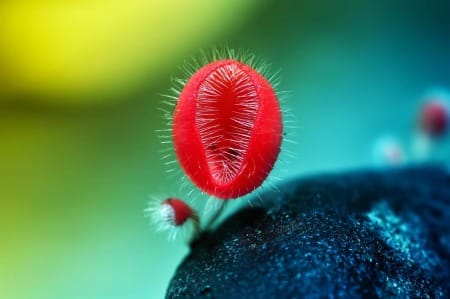
Specialty Macro Lenses
For photographers who want to push the boundaries of macro photography, specialty lenses offer unique capabilities beyond those of traditional primes and zooms. These lenses are often more challenging to use but allow for creative effects and extreme magnification.
· Tilt-Shift Macro Lenses: A tilt-shift macro lens allows you to adjust the lens’s plane of focus independently of the sensor, enabling fine control over depth of field and perspective. This capability is particularly useful for product photography or still-life macro work, where photographers want precise focus across a flat subject or to create selective focus effects. Tilt-shift lenses can add a creative edge to macro photography, but they often come with a learning curve and a higher price tag.
· Ultra-Macro Lenses: Ultra-macro lenses, like the Canon MP-E 65mm f/2.8 1-5x, offer extreme magnification ratios of up to 5:1, meaning the subject appears five times its actual size on the sensor. These lenses are suited for specialized work that requires capturing details beyond what the naked eye can see, such as scientific photography or extreme close-ups of textures and patterns. Ultra-macro lenses typically require a tripod and precise manual focus, as the high magnification amplifies any movement and makes focusing more challenging.
Extension Tubes and Close-Up Filters
If you’re looking to experiment with macro photography but aren’t ready to invest in a dedicated macro photography lens, extension tubes, and close-up filters provide affordable alternatives. While they don’t offer the same quality as a true macro lens, they allow you to achieve closer focusing distances with a standard lens.
· Extension Tubes: These are hollow tubes placed between the camera body and lens, which reduce the minimum focusing distance and increase magnification. Extension tubes are a cost-effective way to get closer to your subject without purchasing a new lens, though they do reduce the amount of light reaching the sensor, which can affect exposure and image quality.
· Close-Up Filters: These are screw-on filters that attach to the front of a lens, working like a magnifying glass to allow closer focusing. While they’re convenient and inexpensive, close-up filters can sometimes introduce optical distortions and reduce sharpness, making them less ideal for high-quality macro photography.
Summary
With a variety of lens types available, there’s a macro photography lens to suit every photographer’s style and subject matter. Whether you prefer the sharpness of a prime macro lens, the versatility of a zoom with macro capability, or the creative options of specialty lenses, each type offers unique advantages for different macro applications. Understanding the strengths and limitations of these lens types can help you make an informed choice and explore the miniature world of macro photography with confidence.
Section 4: Macro Photography Lens Options by Budget
When choosing a macro photography lens, budget is a significant consideration. Fortunately, there are high-quality options available across various price ranges, so photographers at any skill level can find a lens that suits both their creative needs and financial limits. This section breaks down the best macro photography lenses based on budget, offering recommendations for entry-level, mid-range, and professional users, along with a look at third-party options that offer great value.
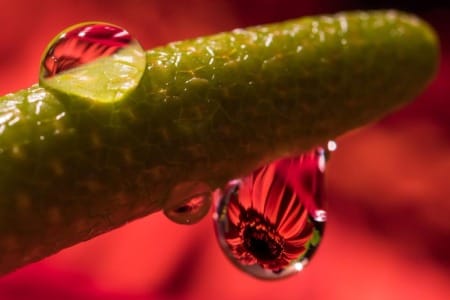
Budget-Friendly Macro Lenses
For beginners or those exploring macro photography as a hobby, budget-friendly macro lenses offer an affordable way to achieve excellent close-up images without a substantial investment. Many of these lenses provide a 1:1 magnification ratio and the essential features needed for basic macro work, such as sharp optics and decent autofocus.
- Popular Options: One popular budget macro lens is the Canon EF-S 60mm f/2.8 Macro USM, which offers high-quality optics and close focusing capabilities at a reasonable price. Nikon users may consider the AF-S DX Micro-NIKKOR 40mm f/2.8G, which provides a compact and affordable option for capturing detail.
- Benefits: These budget lenses are compact, lightweight, and ideal for photographers who want to try macro photography without a heavy or expensive setup. They work well for stationary subjects like flowers or textures but may struggle with more complex scenarios, such as insects or fast-moving subjects.
- Considerations: Budget macro lenses often have shorter focal lengths, requiring photographers to get very close to their subjects. This can be challenging if you’re photographing shy wildlife, as getting too close may disturb them.
Mid-Range Macro Lenses
Mid-range macro lenses offer enhanced features and versatility, making them an excellent choice for serious enthusiasts or semi-professionals. These lenses often come with more advanced autofocus systems, better build quality and additional features like weather sealing. A macro photography lens in this range typically provides a balance of affordability and performance, making it a solid investment for those looking to grow in macro photography.
- Popular Options: In the mid-range category, the Tamron 90mm f/2.8 Di VC USD Macro is highly regarded for its sharpness, image stabilization, and durable build. Another excellent choice is the Sigma 105mm f/2.8 EX DG OS HSM Macro, which offers optical stabilization and strong performance at close distances. Both lenses are compatible with multiple camera systems, giving photographers more flexibility.
- Benefits: Mid-range lenses often have focal lengths between 90mm and 105mm, providing a comfortable working distance for various subjects, including insects and other small animals. These lenses typically feature optical stabilization, which is beneficial for handheld macro shots.
- Considerations: While mid-range macro lenses offer excellent value, they may lack some of the advanced features found in high-end lenses, such as ultra-fast autofocus or the highest-quality optics. However, for most macro photographers, these lenses provide all the necessary features to capture high-quality close-up images.
High-End Professional Macro Lenses
Professional macro lenses are designed for photographers who demand the best in image quality, durability, and advanced features. These lenses are often built with premium materials, ensuring they can withstand the rigors of professional use. Additionally, professional macro lenses generally have the sharpest optics, the most accurate autofocus, and advanced features like extensive weather sealing and superior optical coatings.
- Popular Options: Canon’s EF 100mm f/2.8L Macro IS USM is a top choice among professionals, featuring optical stabilization, weather sealing, and high-quality L-series optics. Sony users may consider the Sony FE 90mm f/2.8 Macro G OSS, known for its stunning sharpness, stabilization, and responsive autofocus. Nikon’s AF-S VR Micro-NIKKOR 105mm f/2.8G IF-ED is another highly regarded professional macro lens, offering exceptional image quality and vibration reduction for steady handheld shots.
- Benefits: High-end macro lenses provide the best possible image quality, from sharpness to color rendition. These lenses are designed to handle a variety of conditions and subjects, making them ideal for professional photographers who shoot both in the studio and outdoors.
- Considerations: Professional macro lenses are often heavier and more expensive than other options, so they’re best suited for photographers who are committed to macro photography or need professional-grade equipment. For beginners or hobbyists, the investment may be more than necessary for basic macro work.
Third-Party Macro Lenses
Third-party manufacturers like Sigma, Tamron, and Tokina offer excellent macro lenses that provide solid performance at a lower price point compared to native brand options. These lenses are ideal for photographers looking to balance quality with budget considerations, as they often include similar features to brand-name lenses at a more affordable price.
- Popular Options: The Tamron SP 90mm f/2.8 Di Macro and the Sigma 105mm f/2.8 EX DG OS HSM are two highly rated third-party macro lenses. Both offer sharp optics, stabilization, and compatibility with multiple camera brands, making them versatile choices for photographers who want quality without overspending.
- Benefits: Third-party lenses often provide similar performance to native brand lenses but at a lower cost. They’re compatible with multiple systems, allowing photographers flexibility if they switch camera brands or need multiple mount options.
- Considerations: While third-party lenses have improved significantly in quality, they may sometimes have slower autofocus speeds or slightly less durable construction compared to native options. It’s essential to read reviews and test lenses, if possible, to ensure they meet your specific requirements.
Summary
Whether you’re just starting out or looking for top-tier equipment, there’s a macro photography lens for every budget. From budget-friendly options that offer good quality at close distances to high-end lenses that deliver professional-grade performance, each lens type allows photographers to explore macro photography at a price that suits their needs. By considering the strengths and limitations of each category, you can choose a macro lens that aligns with your creative goals, giving you the tools to capture the beauty of the miniature world.
Section 5: Choosing the Right Macro Photography Lens for Your Camera System
When investing in a macro photography lens, compatibility with your camera system is a key factor. Different camera brands and sensor types (crop sensor vs. full-frame) have specific requirements and can impact your choice of lens. Additionally, understanding how a lens will work with your particular setup can ensure you get the most out of your macro photography experience. Here, we’ll cover important considerations to make when selecting a macro lens that best matches your camera body and shooting style.
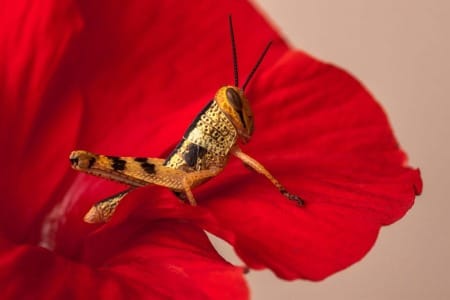
Compatibility Considerations
One of the first steps in choosing a macro photography lens is to ensure it’s compatible with your camera’s lens mount. Most camera brands have proprietary mounts, meaning lenses are not universally compatible across brands. Canon, Nikon, Sony, and other manufacturers all have unique mounts, and lenses designed for one may not work on another without an adapter, which can sometimes impact performance.
- Native Lenses vs. Adapted Lenses: Native lenses (those designed for a specific brand and mount) often provide the best performance, especially with autofocus and electronic communication between the lens and camera. Adapted lenses, while offering more variety, can sometimes experience reduced functionality, such as slower autofocus or limited access to certain settings.
- Using Adapters: If you’re considering a macro photography lens from a different brand, adapters can make it possible to use the lens on your camera. However, it’s essential to research compatibility and user feedback, as adapters can impact lens performance, especially in close-up photography where precise focus is critical.
Crop Sensor vs. Full-Frame: How Sensor Size Affects Macro Photography
The type of camera sensor—crop sensor (APS-C) or full-frame—has a direct impact on the effective focal length of a macro photography lens and, by extension, the image’s composition. Understanding how sensor size affects your lens choice can help you choose a macro lens that aligns with your creative goals.
- Full-Frame Cameras: On full-frame cameras, a macro lens’s focal length will match its specified length. For instance, a 100mm macro lens on a full-frame body provides exactly 100mm of reach. This setup is ideal for those who want to capture a wider field of view or need a more natural perspective when photographing larger subjects like flowers.
- Crop Sensor (APS-C) Cameras: On crop-sensor cameras, a lens’s focal length is effectively multiplied by the crop factor (usually 1.5x or 1.6x). This means that a 100mm macro lens on an APS-C camera behaves more like a 150mm or 160mm lens in terms of field of view, giving additional "reach." This can be advantageous for photographers working with small or skittish subjects, such as insects, as it allows for greater working distance while still filling the frame.
Brand-Specific Considerations
Each camera brand offers unique options and features within its lineup of macro lenses, so it’s helpful to consider what makes each brand’s lenses distinct.
- Canon: Canon offers a range of EF and RF macro lenses, catering to both DSLR and mirrorless users. Canon’s high-end L-series macro lenses, such as the EF 100mm f/2.8L Macro IS USM, are known for excellent image stabilization and optical quality, making them popular among professionals.
- Nikon: Nikon’s Micro-NIKKOR lenses, like the AF-S VR Micro-NIKKOR 105mm f/2.8G IF-ED, are highly regarded for their sharpness and vibration reduction. Nikon also has a selection of Z-mount macro lenses optimized for their mirrorless cameras, providing native options for users of the Z system.
- Sony: Sony’s E-mount system includes the popular FE 90mm f/2.8 Macro G OSS, which offers sharp optics and image stabilization, catering to both full-frame and APS-C mirrorless users. Sony’s focus on mirrorless technology means their lenses are lightweight and compact, making them great for fieldwork.
- Third-Party Options: Third-party manufacturers like Sigma, Tamron, and Tokina produce macro lenses compatible with multiple camera mounts. For example, the Tamron 90mm f/2.8 Di VC USD Macro and Sigma 105mm f/2.8 EX DG OS HSM Macro are available in several mounts and offer competitive image quality and features at more affordable prices.

Autofocus and Manual Focus Performance
Autofocus and manual focus capabilities are crucial considerations when choosing a macro photography lens. Different camera systems may offer better autofocus support with their native lenses, and macro photography often requires precise focusing, especially when working at high magnifications.
- Autofocus Performance: Autofocus can be challenging in macro photography due to the narrow depth of field. Many photographers find native lenses provide the most reliable autofocus performance, especially on mirrorless cameras where focus peaking assists with manual adjustments. Some lenses, particularly third-party options, may have slower autofocus speeds or hunt more in low light.
- Manual Focus and Focus Peaking: Macro photographers frequently use manual focus for greater control over the focus plane. Camera systems with focus peaking, which highlights areas in focus, make it easier to fine-tune focus manually. This feature is especially helpful when using a tripod and focusing on static subjects, as it allows for precise control.
Summary
Selecting the right macro photography lens for your camera system involves more than just picking a focal length or magnification ratio. Compatibility, sensor type, brand-specific features, and focus performance all play vital roles in how effectively a lens will perform in macro scenarios. By carefully considering these factors, you can choose a lens that not only fits your camera but also meets your creative and technical needs, enabling you to explore macro photography with confidence and precision.
Section 6: Practical Tips for Choosing the Perfect Macro Photography Lens
Selecting the best macro photography lens goes beyond analyzing specifications; it requires a thoughtful approach that considers your subject matter, style, and photography goals. Here, we’ll explore practical tips to help you make an informed decision, from defining your purpose to researching user reviews and even testing lenses in person. These tips will ensure you choose a macro lens that not only meets your technical needs but also enhances your creative journey.
Define Your Purpose and Shooting Style
The first step in choosing the right macro photography lens is to clearly define your primary purpose. Are you planning to photograph delicate details of flowers and textures, or are you interested in capturing insects and other wildlife? Understanding your main subject matter and shooting style will help narrow down the most important features in a macro lens.
- Stationary Subjects: If your focus is on stationary subjects like flowers, textures, or objects in controlled environments, you might benefit from a lens with a shorter focal length (around 50-60mm). These lenses are compact, affordable, and allow you to get close to the subject without needing a significant working distance.
- Mobile or Skittish Subjects: For those interested in photographing insects or small animals, a longer focal length (90-150mm) is ideal. This will give you more working distance, allowing you to capture detailed shots without disturbing the subject. This setup is particularly useful for outdoor macro photography, where maintaining distance helps you avoid casting shadows or startling wildlife.
Consider the Lighting Conditions
Lighting plays a significant role in macro photography, and different lenses handle lighting challenges in various ways. Choosing a macro photography lens with a large maximum aperture (like f/2.8) can help in low-light situations and allows you to achieve beautiful background blur, creating a smooth, defocused backdrop that highlights the subject.
- Natural Light: If you primarily shoot outdoors in natural light, look for a lens with excellent coating and optical quality to minimize glare and chromatic aberration. Lenses with an aperture of f/2.8 or larger help capture more light, which is valuable when working in shaded areas.
- Controlled Lighting: For studio or controlled lighting setups, a smaller maximum aperture (like f/4 or f/5.6) can still produce excellent results. Additionally, studio setups allow you to use lighting accessories like ring flashes or diffusers, which illuminate small subjects effectively, regardless of the lens’s aperture.
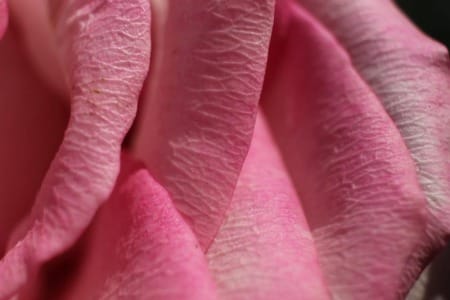
Testing and Trying Lenses Before Purchase
If possible, testing a macro photography lens before buying it can be invaluable. Many camera stores or rental services allow photographers to try lenses, which can give you a real feel for the lens’s handling and performance in your preferred shooting environment.
- Renting for Field Experience: Renting a lens for a day or weekend gives you the chance to test it in real-world conditions. You can evaluate factors like handling, focus performance, and image quality, allowing you to make a more informed decision.
- Testing in Store: If renting isn’t an option, testing a lens in-store is a good alternative. Bring your camera body and spend time photographing objects with fine details, observing the sharpness and clarity. Also, check how comfortably the lens handles with your specific camera setup, as some macro lenses can be heavier than others.
Read Reviews and Analyze Sample Images
Reading reviews and examining sample images captured with different macro lenses can provide valuable insights into how the lens performs across various scenarios. Look for reviews from photographers with similar needs or shooting styles, as they often highlight practical considerations and real-world applications.
- Professional Reviews: Websites and magazines often provide in-depth reviews and lab tests, covering aspects like sharpness, chromatic aberration, and distortion. These reviews are beneficial if you’re looking for technical details.
- User Reviews: User reviews can give you a sense of how the lens performs in different environments, such as outdoor or low-light situations. Users often share tips on working with specific lenses, offering practical insights into challenges and benefits that may not appear in technical reviews.
Consider Future Expansion and Versatility
If you plan to expand your macro photography in the future, choosing a versatile lens that accommodates growth can be beneficial. For instance, lenses with longer focal lengths and image stabilization provide flexibility for various types of macro subjects and are more versatile in diverse shooting conditions.
- Room for Skill Development: As you gain experience, you may want a macro lens that allows for advanced techniques, such as focus stacking or extreme close-ups. Investing in a versatile lens initially can help you avoid the need to upgrade as your skills progress.
- Use Beyond Macro: Some macro lenses double as excellent portrait lenses, thanks to their sharpness and pleasing bokeh. A versatile macro lens can serve dual purposes, making it a more cost-effective investment if you want a lens that performs well in both macro and portrait photography.
Summary
Choosing the right macro photography lens requires balancing your creative aspirations with practical considerations. By defining your purpose, considering lighting, testing lenses, researching reviews, and planning for future growth, you can select a macro lens that complements your style and enhances your ability to capture stunning close-up details. With the right lens in hand, you’ll be ready to explore the fascinating world of macro photography and capture the beauty in life’s tiniest details.
Conclusion
Selecting the ideal macro photography lens is a blend of understanding your creative vision, technical needs, and practical constraints. Macro photography opens doors to exploring a hidden world of intricate details, and the right lens can make this journey incredibly rewarding. By carefully considering factors such as magnification ratio, focal length, sensor compatibility, and budget, you can find a lens that aligns with both your immediate and long-term goals.
For beginners, a budget-friendly macro lens with solid optical quality is often a great starting point, allowing you to experiment and refine your skills without a hefty investment. As your experience grows, mid-range or professional options with features like image stabilization, advanced autofocus, and longer focal lengths provide flexibility and enhanced performance for diverse subjects, from delicate flowers to dynamic insects. Renting or testing lenses beforehand also allows you to get hands-on experience, helping you to feel confident in your choice.
Beyond technical specifications, understanding the type of subjects and lighting conditions you prefer will guide you toward a lens that suits your shooting style. Reading reviews, analyzing sample images, and planning for future expansion will further aid in making an informed decision.
Ultimately, the right macro photography lens will empower you to capture the world up close, enabling you to see—and share—remarkable details that often go unnoticed. Whether for hobby or professional work, a well-chosen macro lens opens new perspectives and creative possibilities in your photography journey.
Thank you for visiting our site and being part of this journey with us! We rely on the generous support of visitors like you to continue providing high-quality. Your donation, no matter the size, helps us maintain the website and create more valuable resources for everyone.

